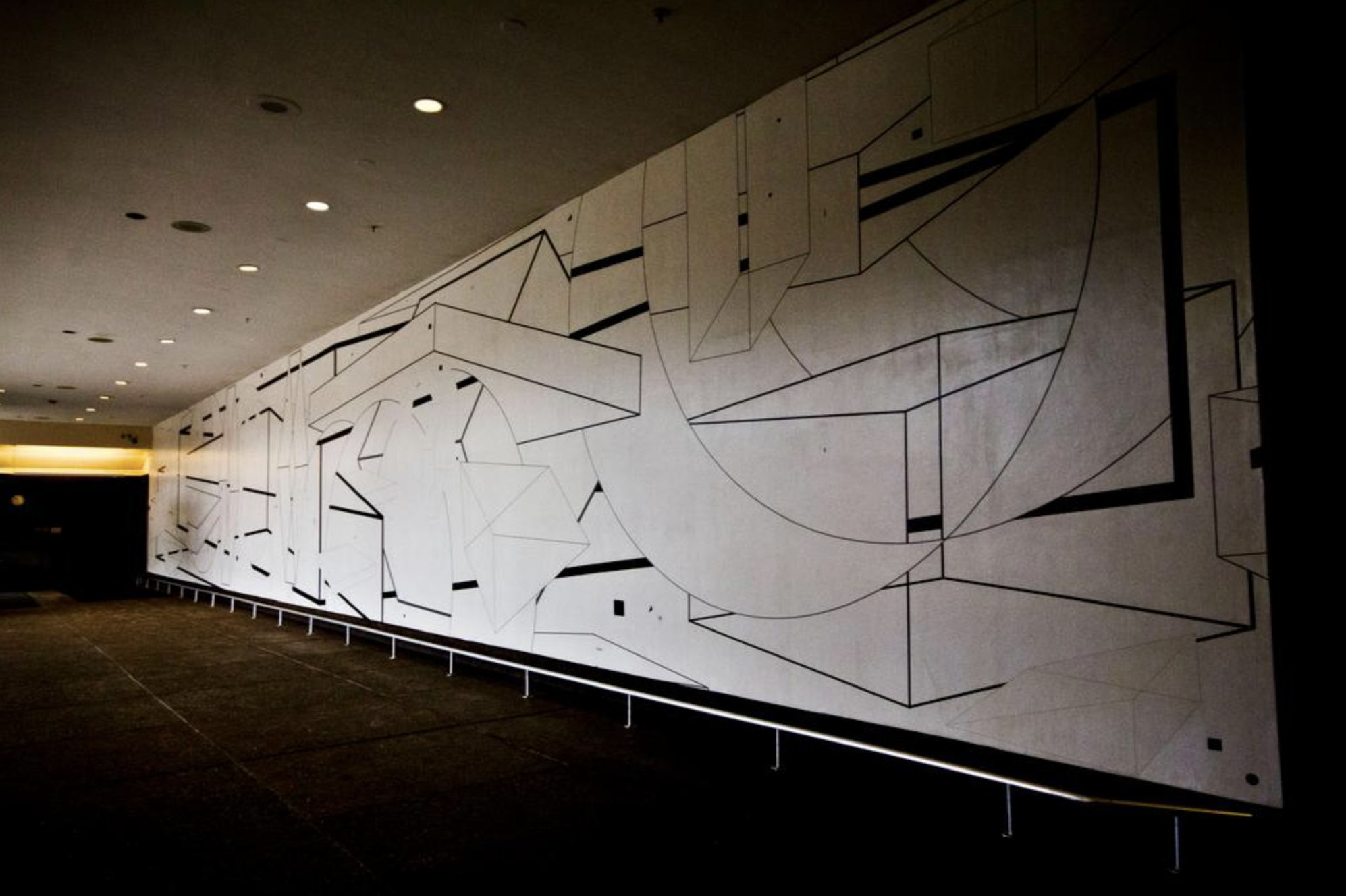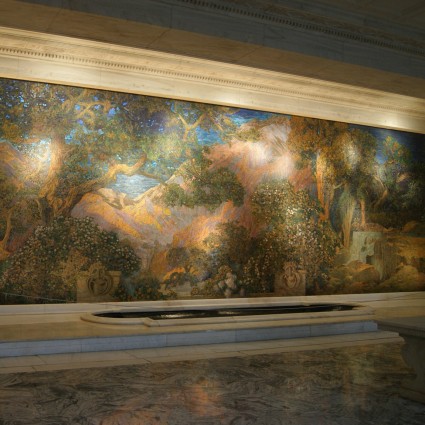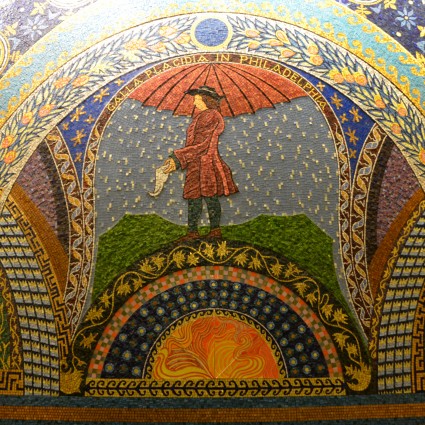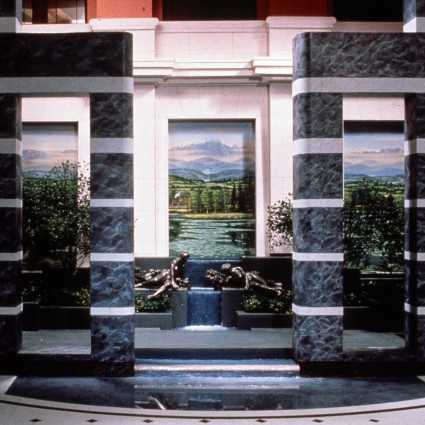At A Glance
Two murals comprised of solid lines, dashed lines, and sharp angles, with hints of volume and complicated perspective
The complex use of volumes and perspectives offer different effects as the viewer changes position
Held painted each mural as a whole rather than create the works in separate sections
Art critic Victoria Donohoe has called these murals “a metaphysical balancing act”
Solid lines, dashed lines, sharp angles, with hints of volume and complicated perspective – all in a stark black on white – make up the two murals that artist Al Held called Order/Disorder and Ascension/Descension.
As Held worked, walking the full length of the paintings, he allowed his concepts to evolve until he felt that the sequence of visual components and perceptual phenomena was exactly as it should be.
The work was commissioned for the Social Security building lobby under the Art in Architecture Program of the U.S. General Services Administration. Held was selected for the commission by a special panel appointed by the National Endowment for the Arts.
The murals were Held’s first attempt to integrate time and movement into the viewer’s experience. Rather than create the works in separate sections, Held decided to paint each mural as a whole. To do this, he located a Brooklyn warehouse where he could erect 90-foot replicas of the wall spaces that the murals would occupy. The huge canvases, each of which measured nearly 1,200 square feet, had to be ordered from weavers in Belgium, who required three months to complete the weaving.

As Held worked, walking the full length of the paintings, he allowed his concepts to evolve until he felt that the sequence of visual components and perceptual phenomena was exactly as it should be. The murals are visible from outside the glass-fronted lobby as well as inside, and their complex use of volumes and perspectives offers different effects as the viewer changes position. Art critic Victoria Donohoe has called these murals “a metaphysical balancing act.”
Adapted from Public Art in Philadelphia by Penny Balkin Bach (Temple University Press, Philadelphia, 1992).



